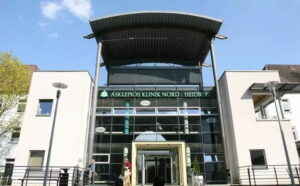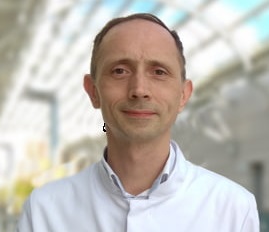Seeking Treatment in Germany: Is Choosing German Clinics Justified?
Germany is one of the most popular destinations for medical tourism. The influx of patients from other countries is constantly growing, with an average of 250,000 foreign patients visiting German clinics annually. Germany’s reputation assures patients of an accurate diagnosis and high-quality treatment based on the most modern protocols and tailored to their individual needs.
According to the Swiss Nobel Foundation, German medicine ranks third in the number of Nobel laureates, slightly behind the United States and the United Kingdom.
An important indicator tracked by the Ministry of Health is the rate of medical errors. In Germany, it stands at 0.3%, securing the country the top spot in global rankings and attesting to the skill level and qualifications of its medical professionals.
What German Clinics Offer to Foreign Patients
In terms of healthcare funding, Germany ranks among the top Western countries, with substantial resources allocated to the creation and equipping of top-tier medical centers.
Treatment prices in German clinics are regulated by law, following approved tariffs. As a result, the cost of medical services in Germany is lower than in many other European countries.
The advanced facilities and welcoming atmosphere in German hospitals ensure a comfortable stay, promoting faster recovery.
Innovations in Leading Fields of Medicine
Oncology
Oncology has always been a priority for treatment in Germany. Today, German clinics lead the way for foreign patients, offering state-of-the-art diagnostics and treatments for cancer patients.
In cancer treatment, doctors use modern protocols that can be adjusted as needed. This system is known as “therapy optimization research”: combining standard treatments while studying a specific cancer type. These programs are further refined to be as effective as possible for patients with similar tumors. Thus, a protocol is not fixed for a certain number of years but is adjusted as new research data becomes available.
An international team led by Dr. Klaus Metzeler at the Munich Research Center developed a molecular diagnostic method for acute myeloid leukemia, based on identifying 17 aggressive molecules. This technique helps predict which patients may experience a relapse after treatment.
According to the World Health Organization (WHO), 85% of leukemia patients experience remission after chemotherapy. However, within two years, more than half relapse due to residual malignant cells that were not eradicated.
Researchers have shown that patients with aggressive forms of leukemia exhibit a specific molecular pattern in leukemia cells. By identifying this pattern during diagnosis, patients can receive intensified treatment targeting these specific cells in the bone marrow.
The molecular method for detecting 17 aggressive molecules is highly effective and cost-efficient for blood cancer diagnosis and is available in leading German clinics.
CAR-T-cell therapy against cancer is another new approach offered in the best German hospitals. This innovative project is based on taking a patient’s immune T-cells and “reprogramming” them in the laboratory. T-cells are then equipped with a chimeric antigen receptor (CAR) that can recognize and destroy the structure of tumor cells. The CAR-T structures are reintroduced into the patient’s body, beginning the active phase of the fight against the tumor.
Check-Up Diagnostics
Germany is among the top countries for check-up examinations, due to its efficiency, speed, accessibility, comprehensive approach, and doctors’ competence. An essential advantage of check-ups in German clinics is the individual plan: doctors meet with patients before any tests, gather medical histories, and only then prescribe the necessary range of examinations. This approach ensures precision, so that even the slightest deviations from the norm are not missed.
Example of a Modern Check-Up for Women:
- Consultation with a highly qualified doctor
- Breast examination using an advanced mammography system with tomosynthesis (layered breast scanning)
- Microbiological and oncological smear test (PAP test)
- Transvaginal ultrasound using high-precision machines
Example of a Modern Check-Up for Men:
- Consultation with a top-qualified urologist
- 3D examination of the prostate to create a map of the organ and accurately target biopsy areas
- Ultrasound of the reproductive organs
- Laboratory analysis for prostate-specific antigen (PSA) — a cancer marker
A unique feature of next-generation check-ups is speed. In leading German clinics, full-body check-ups can be completed in as little as three hours without compromising the quality and effectiveness of the procedures. This option is ideal for patients with limited time who cannot stay in the clinic for a day or two.
Orthopedics
Orthopedics is another leading field in German clinics. It receives strong support from both the government and private sources. As a result, advanced centers use only original medications, materials, and prostheses, most of which are produced by world-renowned German companies.
According to the Federal Association of German Doctors, more than 400,000 joint replacement surgeries are performed annually, with hip (200,000 per year) and knee replacements (150,000 per year) being the most common.
Orthopedic departments work closely with research universities, or the clinic itself may be based within a university, enabling rapid adoption of the latest surgical and rehabilitation advances.
German medicine is rightly proud of its many world-renowned scientists and Nobel laureates, who have made numerous significant contributions. One recent breakthrough is the development of EOS digital radiography technology for examining the musculoskeletal system with 3D scanning.
Advantages of EOS:
- Significantly reduced radiation exposure (compared to CT scans), allowing safe scanning of children and adolescents for scoliosis screening
- Imaging in a standing position, capturing two views simultaneously
- Full skeletal X-ray in 25 seconds
- Simultaneous automatic calculation of 100 clinical parameters
- Serial X-ray images (producing multiple images)
Orthopedic check-ups are also a popular area of medical tourism, involving screening and monitoring of joint health. Regular check-ups are important not only for detecting pathologies but also after orthopedic interventions for follow-up. Highly qualified doctors can quickly identify patient risks and guide them to necessary examinations.
Artificial Intelligence (AI) Applications
Germany has created a supportive environment for developing AI and implementing it in healthcare. Over €3 billion has been invested in AI innovations, positioning Germany among the leaders in artificial intelligence development. Doctors use the latest scientific achievements to ensure high accuracy in results and to simplify and expedite the treatment process.
The World’s Best Doctors Are in German Clinics
Each year, the popular magazine Focus publishes a ranking of German doctors, listing top specialists with extensive knowledge and skills. With 1,500 specialists from various fields represented, patients can always find a renowned doctor in a suitable clinic.
Germany has long been a top destination for medical tourism, thanks in part to the qualifications of its doctors. Specialists from around the world reach out to German experts for second opinions or treatment planning for patients with rare conditions.
The Center of Well-being Treatment in Europe — Germany’s Thermal Resorts
Germany is rightfully considered one of the world’s leading centers for spa and wellness treatments. The country’s thermal waters are widely used in treating musculoskeletal disorders, cardiovascular conditions, and respiratory and digestive diseases. Among Germany’s numerous spa towns, Baden-Baden and Bad Kissingen stand out as the most renowned. Planning a holiday in Germany? Contact us, we will estimate how much it will cost to book a hotel with a programme.
Baden-Baden is one of Germany’s oldest and most famous spa towns. The waters, rising from depths of 2,000 meters, are naturally heated to 68°C and are rich in minerals. They are used in hydrotherapy to relieve muscle tension, improve circulation, and treat joint diseases. Ready to book a hotel in Baden-Baden? We work directly with the hotel so we always have great deals, leave a request.
The resort is famous for its thermal complexes, such as the renowned Caracalla Spa and Friedrichsbad, where traditional water treatments are combined with steam baths and aromatherapy. Baden-Baden also offers cutting-edge wellness therapies, including physiotherapy, osteopathy, and detox programs. Thanks to its unique microclimate and high standard of medical care, the resort attracts not only those in need of treatment but also those seeking preventive care and relaxation. We know which hotels have their own medical centres and have developed wellness treatments. Please contact us and we will provide free information on your request.
Bad Kissingen is a resort renowned for its mineral springs, widely used in drinking therapy programs. The town has seven healing springs with diverse mineral compositions, treating gastrointestinal disorders, metabolic issues, and cardiovascular conditions. The Rakoczi spring, particularly valued for its high carbon dioxide content, is used to regulate digestion and improve overall gut health.
A defining feature of Bad Kissingen is its climatotherapy programs, which utilize the mild continental climate and clean air. Surrounded by natural parks, the resort is an ideal location for therapeutic walking (terrainkur), which strengthens the cardiovascular system. In addition to traditional treatments, the resort offers mineral water inhalations, physiotherapy, and rehabilitation programs for chronic conditions. Our collection includes hotels within walking distance of the famous baths and other attractions. Leave a request, and we will find the perfect option for you.
Hospitality Medservice is your trusted partner in finding the best clinic worldwide. On our website, we represent only reputable medical institutions with advanced facilities and the latest treatment protocols. Explore clinics, get to know the doctors, compare treatment costs, and reach out to us for assistance with organizing:
- Treatment travel
- In-person appointments
- Video consultations
- Second opinions
Leave a request on our website, and our medical coordinator will contact you shortly.











